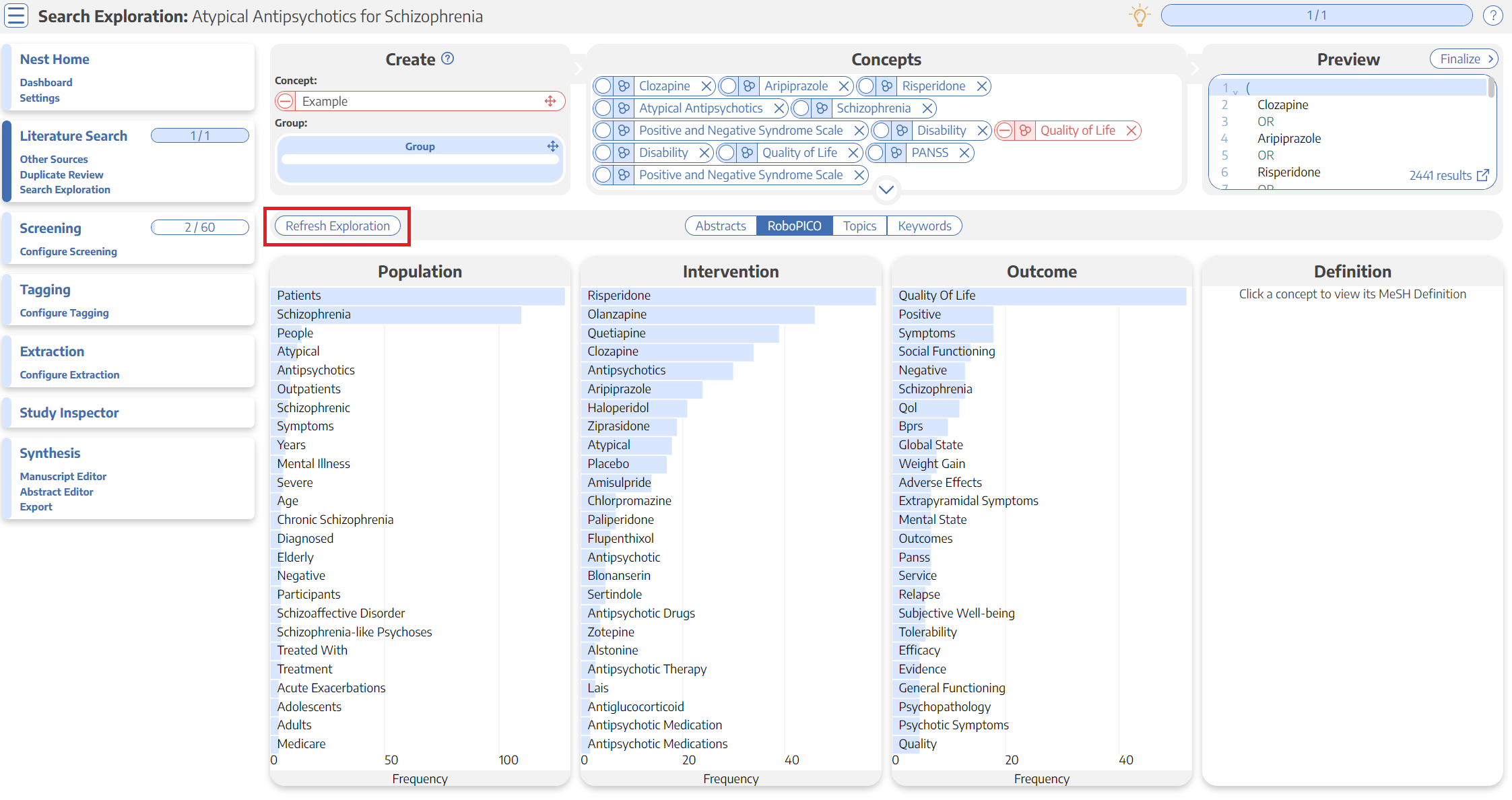
June 21, 2023
Embarking on a systematic literature review can sometimes feel like setting sail on a vast ocean of information. It’s easy to get lost in the waves of articles, studies, and research papers. However, with some careful thought about which direction you’d like to go, you can navigate these waters smoothly and efficiently. Establishing a clear Research Question will define that direction, and help to plan the remainder of your systematic review. Once you have your question, it’s all smooth sailing as you build out your review around your question in Nested Knowledge, our web-based software that simplifies the entire review process.
Step 1: Setting Sail – Choosing Your Research Domain
Before you start your voyage, it’s crucial to define your research domain. Imagine this domain as the general direction you and your team will explore. Specifically, you want to identify the field or topic of interest; this is typically split into identifying 1) a population of interest and 2) a potential disease state, indication, or health event that may impact this population.
For example, you might be interested in how 1) elderly patients 2) are affected by COVID-19. This is a solid start to developing your research question, since it narrows the possible types of studies that may be relevant to you.
Step 2: Charting your Course – Identifying Key Concepts
Even with your narrowed domain of interest, you’ll need to define down further the key concepts that should be included in your systematic literature review. Specifically, you want to explore what is already known about your topic of interest:
Hint: To save time, filter to systematic reviews on your topic–the authors of these existing reviews provide highly concentrated evidence as well as their methods for answering their own research questions!
Delve into your domain, consult previous literature, and pinpoint the fundamental ideas and themes that will shape your research question.
Step 3: All Aboard! – Formulating a Research Question
Now that you have your bearings, it’s time to try out your Research Question and see if it brings you to your evidence of interest. Remember, a well-crafted research question defines the concrete boundaries between ‘relevant’ and ‘not relevant’ for any study you may encounter on your journey. It can be helpful to phrase your research question using PICO:
For example, for elderly populations with previous COVID-19 (P), how does the Pfizer–BioNTech COVID-19 vaccine (I) compare to the Janssen (Johnson & Johnson) COVID-19 Vaccine (C) as measured by adverse events (O)?
Frame your question to be clear, concise, and answerable, capturing the essence of what you seek to explore in your review.
Nested Knowledge Tool to Help Formulate a Research Question

Step 4: Navigating the High Seas – Exploring with Nested Knowledge
Congratulations! You’ve successfully set sail with your research question and finalized your search query. Now, it’s time to navigate the vast sea of literature efficiently and effortlessly, including relevant studies and casting away others with exclusion reasons. You can continue to revise your research question as you learn more and refine your goals, but in Nested Knowledge, new searches, exclusion criteria, and concepts to extract can be added during your review–in effect, repairing or redirecting your ship mid-voyage.
We also offer a few more tools to help once you are under sail: Robot Screener is your first mate for determining which studies should be included or excluded, and every subsequent review step–tagging qualitative information, extracting data for meta-analysis, and analyzing and presenting your findings–is mapped out for you within the software. Perform your review process in one place with our intuitive interface, comprehensive search capabilities, and simple structure to build out interactive, living systematic reviews.
As you begin any new review, remember that assembling a research question for a systematic literature review is like charting a course on the vast ocean of knowledge but you can prepare for such a journey by following the steps above. By identifying your research domain, plotting the course with key concepts, and bringing it all together with your PICO, you can navigate to reach your research goals.
Bon voyage!
For more guidance on Research Questions and systematic review practices, take our free course on How to Conduct a Systematic Review starting with Lesson 1: Introduction to Systematic Review.